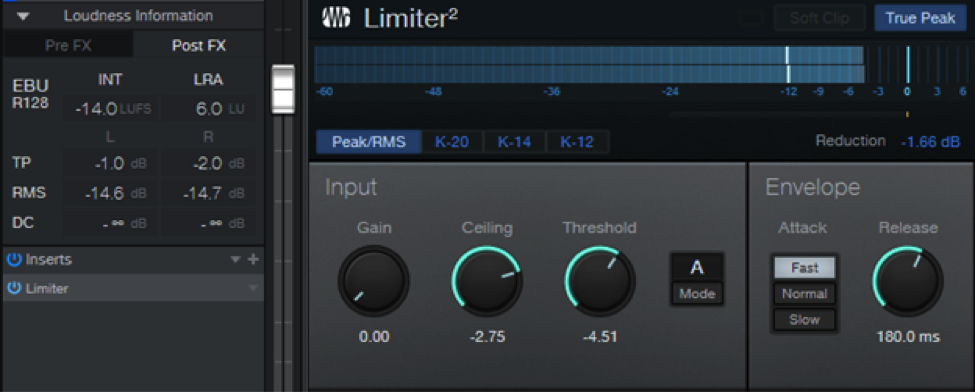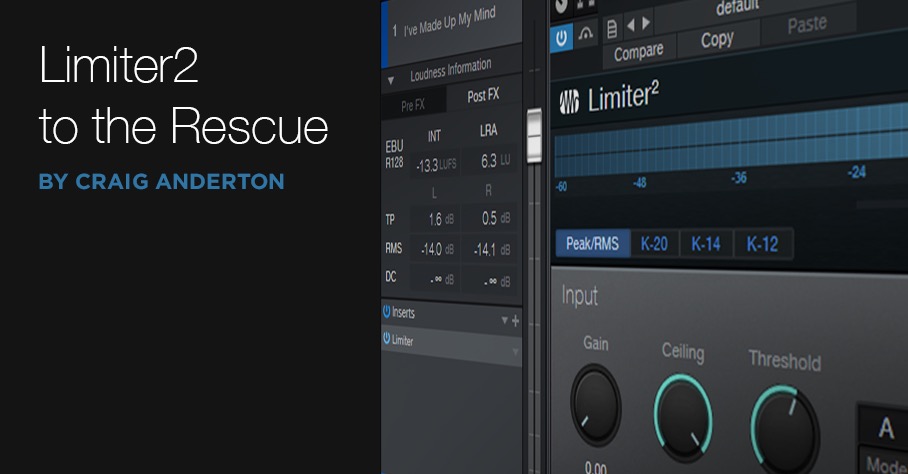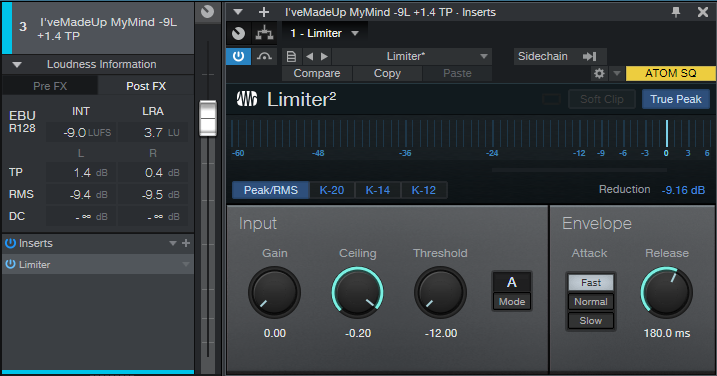Streaming: Limiter2 to the Rescue
The How to Make Spotify Happy blog post picked up a lot of interest, so let’s take the concept a bit further. Even if you’re not dealing with a streaming service, having consistent listening levels in your music makes sense—especially with a collection of songs. But what happens if a song is compressed for artistic reasons, yet you still want to aim for a standard listening level (streaming or otherwise)?
The beauty of the LUFS specification is that it avoids penalizing those who want to take advantage of dynamic range in their music (jazz, classical, etc.). But not everyone creates music that requires maximum dynamic range. I add about 4 to 6 dB of gain reduction when mastering my music, and aim for -13.0 LUFS, because I like what a little compression does to glue the tracks together. However, I do want the music to be streaming-friendly—and the whole point of this post is that Limiter2 makes it easy to hit both LUFS and True Peak settings recommended by various streaming services.
Fig. 1 shows the screen shot for an exported, pre-mastered song. It has a -18.0 LUFS reading. My goal is -13.0 LUFS, with a true peak value below 0.0.
To get closer to -13.0 LUFS, let’s start with a Limiter2 Threshold of -5.00, because applying -5.00 dB of gain reduction to -18.00 LUFS should put us somewhere around -13 dB LUFS. To control True Peak, we’ll use Mode A, Fast Attack (Fig. 2).
We’ve come close to -13.0, but the true peak is well above 0.0. Bringing down the Ceiling by -2 dB puts that 1.6 dB True Peak reading under 0.0 (Fig. 3).
We’ve brought down the peaks, but because the output is lower, the perceived level is lower too (-13.5 LUFS). Dropping the threshold by ‑0.7 dB brought the LUFS to -13.0, while maintaining a TP value under 0.0 (Fig. 4).
We can also make streaming services (like Spotify) happy, with -14.0 LUFS and -1.0 TP values (Fig. 5).

Figure 5: Now we’ve met Spotify’s recommended spec, simply by re-adjusting the Threshold and Ceiling.
But suppose you really like to compress stuff, not because you want to win the loudness wars per se, but just because you like that sound. Fair enough—let’s give listeners music with -9.0 LUFS, and not worry about True Peak (Fig. 6).
But What About the Loudness Wars?
I’m glad you asked. If your music doesn’t meet a streaming service’s specs, they’ll turn it down to an equal perceived level. But what does that sound like?
In the audio example, the first part is of an unmastered song at -9.0 LUFS. It’s fairly loud, and could win at least a skirmish in the loudness wars. The second part is the same unmastered song at -14.0 LUFS, which sounds much quieter.
The third part turns down the -9.0 LUFS section to -14.0 LUFS. Although it has the same overall perceived level as the second part, it sounds compressed, so it has a different character. Bottom line: If you like the sound of compression, a streaming service will not change that sound; it will simply turn down the volume to match material that’s not as compressed. So feel free to use a rational amount of compression—the sound you want will still be there, just at a lower level.
And if you want a higher level…well, that’s why the volume control was invented… right?





